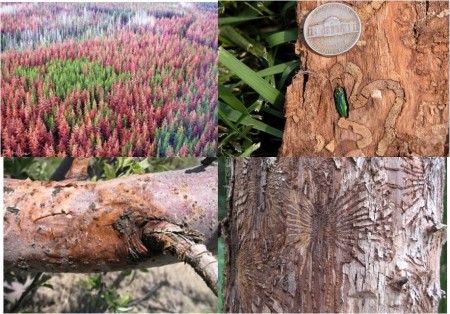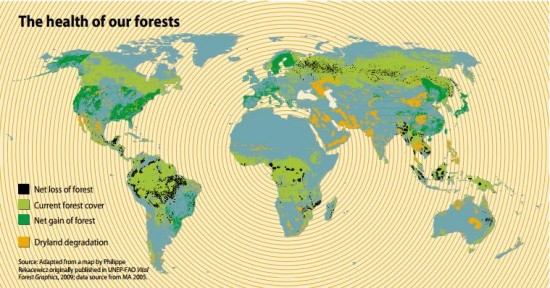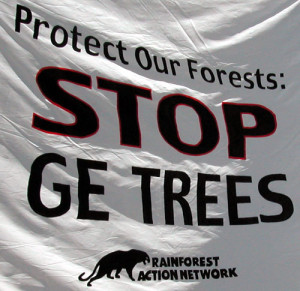June 14, 2015 – Trees are the second largest carbon sink on the planet next to the world ocean. And trees are in decline whether in the tropical rainforests or the taiga, the boreal forest zone that covers much of North America and Eurasia. Deforestation is happening for lots of reasons. Forests are being cleared for agriculture. Disease is wiping out vast areas of boreal coniferous forests.
We can’t afford to lose the tens of thousands of hectares that vanish each year and genetic research may provide us with a tool to fix not only the trees but climate change to boot.
Genetically modifying trees can alter the way they grow, how they resist disease, and even increase their carbon sink capacity. But the anti-GMO movement seems to not understand the implications of their resistance to research in this field. Here’s a quote from Rachel Smolker, BioFuel Watch: “This is deliberate, irreversible and completely irresponsible contamination of the environment with unknown and possibly devastating consequences.”
What are the anti-GMO concerns when it comes to trees?
- GMO trees will contaminate natural trees.
- GMO trees will have unknown impacts on wildlife and humans who live near them.
- GMO trees will be grown in plantation settings devoid of all other plants creating an artificial monoculture.
- GMO trees will require vast amounts of pesticides and fertilizers that will further poison the environment.
How valid are these concerns?
The only legitimate concern raised by the anti-GMO groups is the first point. Why?
If we use GMO crops as the model, the biggest concern was always cross contamination from genetically modified species to non-GMOs. This has yet to happen after almost two decades of commercial growing of GMO corn and other crops. But these are annual staples that live only one growing seasons. Trees are not the same.
So scientists who are experimenting with GMO trees recognize they have to implement longer timeline studies to ensure the same results occur waiting as much as three years for the trees to reach reproductive maturity. This means longer timelines on GMO-tree studies before approvals are sought from regulatory bodies.
What kind of benefits could be derived from introducing GMO forests?
There are so many including:
- Enhanced wood chemistry that would make better lumber with less toxicity during harvesting and processing.
- Similar benefits in trees harvested for paper.
- Better resistance to insects, fungal and other infectious agents like those depicted in the image appearing further below in this posting.
- Better resistance to and recovery from wildfires.
- Better drought and heat tolerance.
- Better cold tolerance.
- Better salt tolerance of particular importance in combating rising sea levels in coastal areas.
- Accelerated growth.
- Enhanced photosynthesis to convert CO2 to energy and oxygen.
- Restoration of valued tree species going or having gone extinct.
If we are to continue to watch our human population rise to levels of 9.5 billion or more by mid-century then more forested land will be cut down to grow food crops.
If we continue to cut down our forests we will see the impact this has on precipitation patterns, aquifers, and land stability with subsequent landslides.
If climate change continues to warm temperate boreal forest areas we will see the spread of insect-borne, bacterial and fungal infections like the mountain pine beetle, ash borer, fire blight, and other agents have destroyed tens of thousands of hectares each year and created fodder for wildfires when combined with climate change-induced drought conditions.

GMO and the science of genomics gives us a tool that can allow us to expand cropland while we enhance forest lands. Enhanced trees can help us mitigate CO2 increases by being more effective carbon sinks.
If we cut off GMO tree research we will lose in so many ways.






















[…] Anti-GMOs notwithstanding, modifying tree genetics could enhance photosynthesis, reduce diseases and infestations, and suck up more CO2. […]